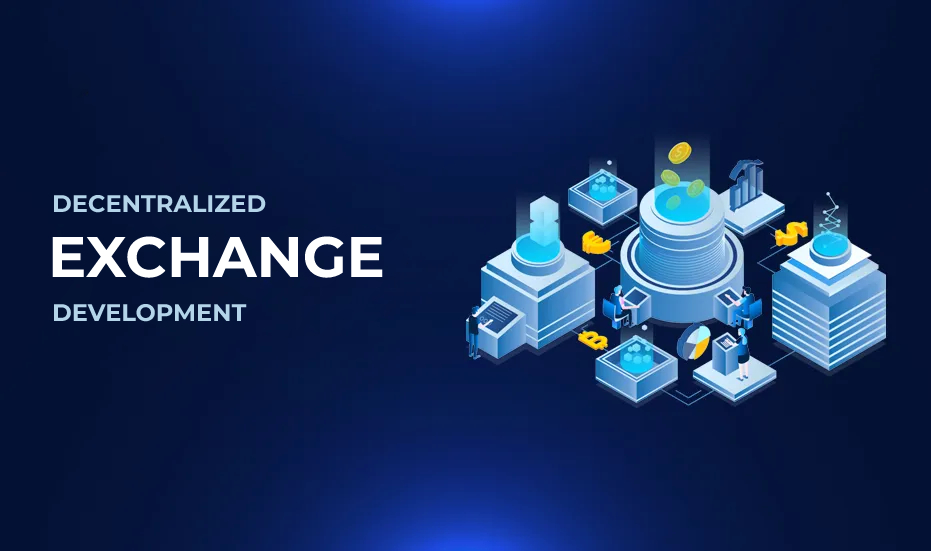In the fast-evolving landscape of cryptocurrencies, decentralized exchanges (DEX) have gained significant traction for providing users with greater control over their digital assets. Creating a decentralized exchange platform is a complex but rewarding endeavor, offering a peer-to-peer approach to trading that aligns with the ethos of blockchain technology. In this comprehensive guide, we’ll delve into the essential steps and considerations for Decentralized Exchange Development, ensuring you have the knowledge and insights to embark on this exciting journey.
Understanding the Basics of Decentralized Exchange Development
1. Definition and Significance of DEX:
Decentralized exchanges function independently of a central authority, enabling users to engage in direct peer-to-peer trading. Unlike centralized exchanges, DEX platforms enable users to retain control of their private keys, providing enhanced security and mitigating the risks associated with centralized custody. The significance of DEX lies in its alignment with the core principles of blockchain – decentralization, security, and transparency.
2. Key Features of a DEX Platform:
Before diving into the development process, it’s crucial to understand the essential features that distinguish a decentralized exchange platform. These include order books, liquidity pools, smart contracts, and decentralized identification systems. Each element plays a pivotal role in creating a seamless and secure trading experience for users.
3. Conducting Market Research:
Before initiating the development process, thorough market research is imperative. Examine existing DEX platforms, identify market gaps, and understand user preferences. This research will inform your platform’s unique selling points and help tailor it to the needs of your target audience.
4. Choosing the Blockchain Network:
Selecting the right blockchain network is a critical decision. Ethereum, Binance Smart Chain, and Polkadot are popular choices for DEX development due to their smart contract capabilities and developer-friendly environments. Consider factors such as transaction speed, security, and community support when making this decision.
5. Designing the User Interface (UI) and User Experience (UX):
Creating an intuitive and user-friendly interface is paramount for the success of your DEX platform. Prioritize a seamless user experience with clear navigation, responsive design, and visually appealing graphics. A well-designed UI/UX encourages user engagement and fosters trust in your platform.
6. Implementing Smart Contracts:
Smart contracts are the backbone of any decentralized exchange. They facilitate trustless and automated transactions by executing predefined rules. Code your smart contracts to handle order matching, fund transfers, and liquidity management. Security is paramount during this step, as vulnerabilities in smart contracts can have severe consequences.
7. Integrating Wallets and Key Management Systems:
Decentralized exchanges require users to have control over their private keys. Integrate secure wallet solutions and key management systems to ensure that users have full ownership of their funds. This step is crucial for building trust among your user base.
8. Liquidity Provision and Market Making:
To ensure a vibrant trading environment, implement mechanisms for liquidity provision and market making. Encourage users to provide liquidity to your platform by offering incentives such as liquidity pool rewards. A well-liquidity exchange attracts more traders, fostering a robust ecosystem.
9. Security Audits and Testing:
Security is non-negotiable in the realm of decentralized exchange development. Conduct thorough security audits of your smart contracts and the overall platform. Engage third-party security experts to identify and address vulnerabilities. Rigorous testing, including penetration testing and stress testing, is crucial before launching your DEX.
10. Compliance and Regulatory Considerations:
Understand and comply with the regulatory landscape in the jurisdictions where you plan to operate. Decentralized exchanges should navigate legal considerations related to Know Your Customer (KYC) and Anti-Money Laundering (AML) regulations. Striking a balance between decentralization and regulatory compliance is key for the long-term success of your platform.
The Future of Decentralized Exchange Development
As the cryptocurrency space continues to evolve, decentralized exchanges are expected to play an increasingly significant role. Embracing Decentralized Exchange Development not only aligns with the ethos of blockchain technology but also contributes to the democratization of finance. By empowering users with greater control over their assets, DEX platforms are at the forefront of reshaping the landscape of digital asset trading.
In conclusion, creating a decentralized exchange platform is a multifaceted process that requires a deep understanding of blockchain technology, market dynamics, and user behavior. By following the steps outlined in this guide, you can embark on a journey to develop a secure, user-friendly, and innovative DEX platform. Embrace the principles of decentralization, prioritize security, and contribute to the evolution of decentralized finance through your unique contribution to the crypto space.




